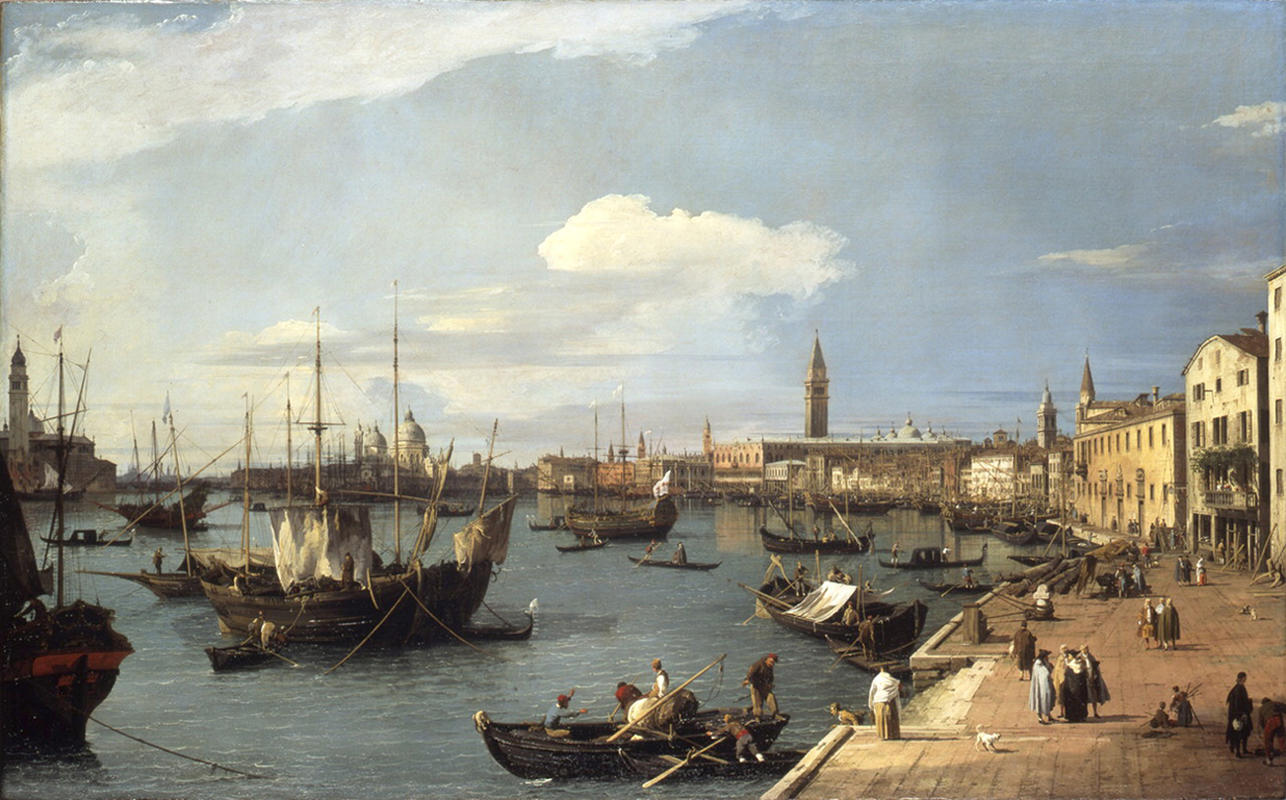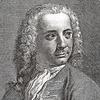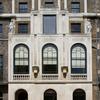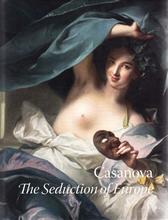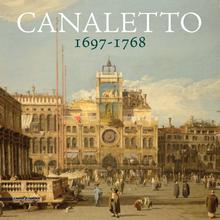More about Riva degli Schiavoni, Venice
- All
- Info
- Shop

Sr. Contributor
Canaletto knows there ain't no party like a gondola party 'cause a gondola party don't stop.
We're privy to a view not many outsiders got in 18th century Venice. Because this part of the city generally looked like sh*t. Venice's glory days were far behind her. Invasions, political ineptitude, and sinking fortunes made parts of the lagoon little better than a cesspool. And this part was one of the cessiest-pools of all. But, Canaletto's patron wanted it, and 'no' wasn't in the painter's vocabulary. Shrugs and a, "You're paying for it, bucko," certainly were. And that's probably the attitude that lead to this painting, considered to be one of his prime masterpieces.
Canaletto knew what kind of artist he was: an "entrepreneurial" one. He had a lot of talent, but he used it to trade in on the Venetian tourism industry rather than examine things no one cared about in contemporary Venice. Like the human condition. Who cares about the inward life of humankind when there's vacation trinkets to be bought? Not the British, that's for sure.
Britain in the early 1700s was the largest, leanest, meanest economy on Earth. As such, all of her well-to-do sons (and a few of her spunkier daughters) were expected to visit the major sites of European history. And, of course, to bring some presents for everyone back home. Canaletto provided those mementos. His particular set of skills was in churning out vedute, which were basically large postcards to give Mum and Pop proof that you visited all the art, and that you certainly did not patronize any whorehouses or opium dens in Venice's citywide red light district. Definitely not.

Contributor
One of Italian painter Canaletto's insanely detailed paintings of Venice.
Canaletto was a committed user of the camera obscura, a gadget with a lens that reflected what was being painted onto the canvas. The trick was to trace the reflected image as carefully as possible and then get the colors right. It is art for the seriously obsessive.
It works great for things that do not move, like big buildings or ships that are anchored. It does not work at all for things that do move, like people and ships that are sailing. The painting is therefore a mix of traced stuff and free-handed painted things.
Riva degli Schiavoni is one of the world’s great promenades. Built in the 9th century, it is still a lively place. The famous Doge Palace and San Marco Square are on one side of the street, and the waterfront on the other. Doge Palace goes back to the middle ages but has been rebuilt many times over. It is now an opera museum.

